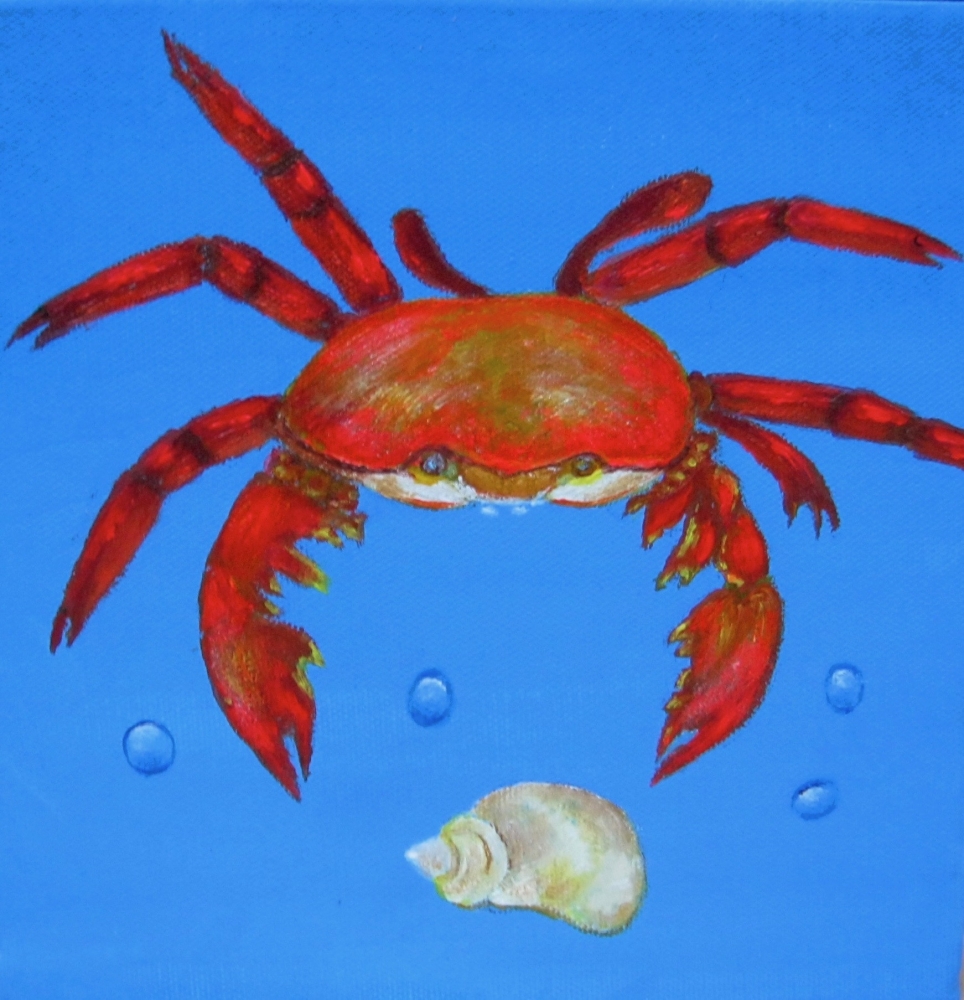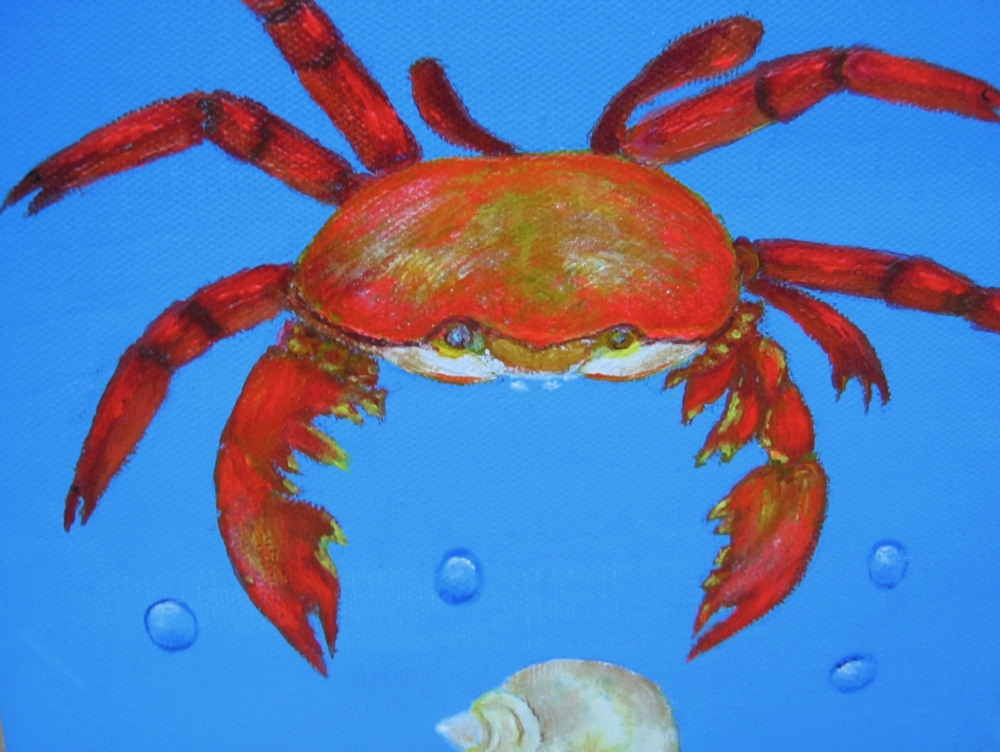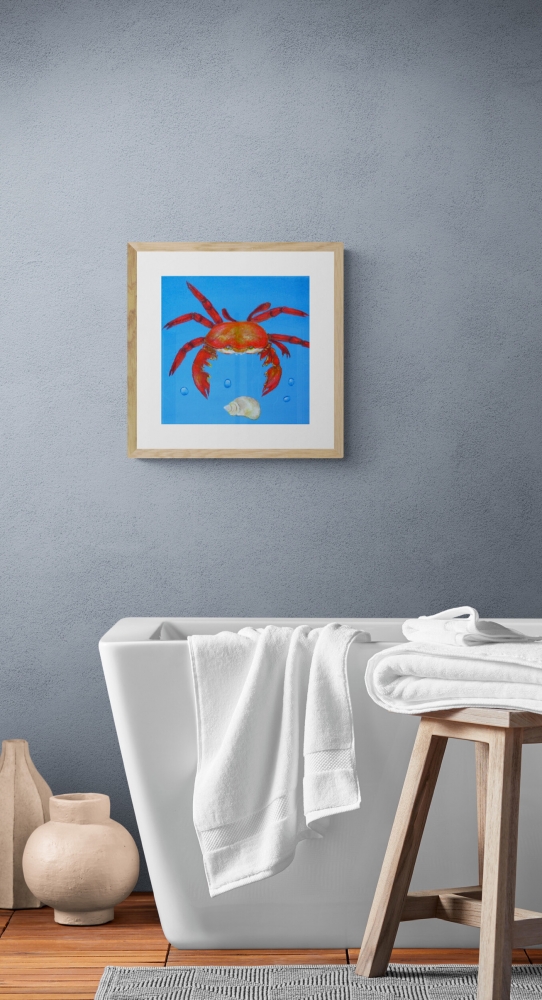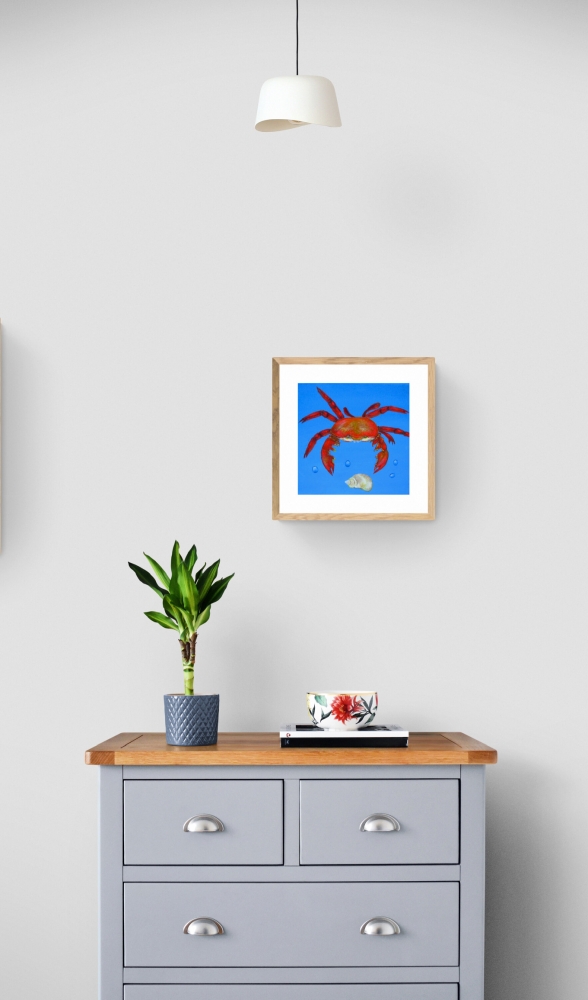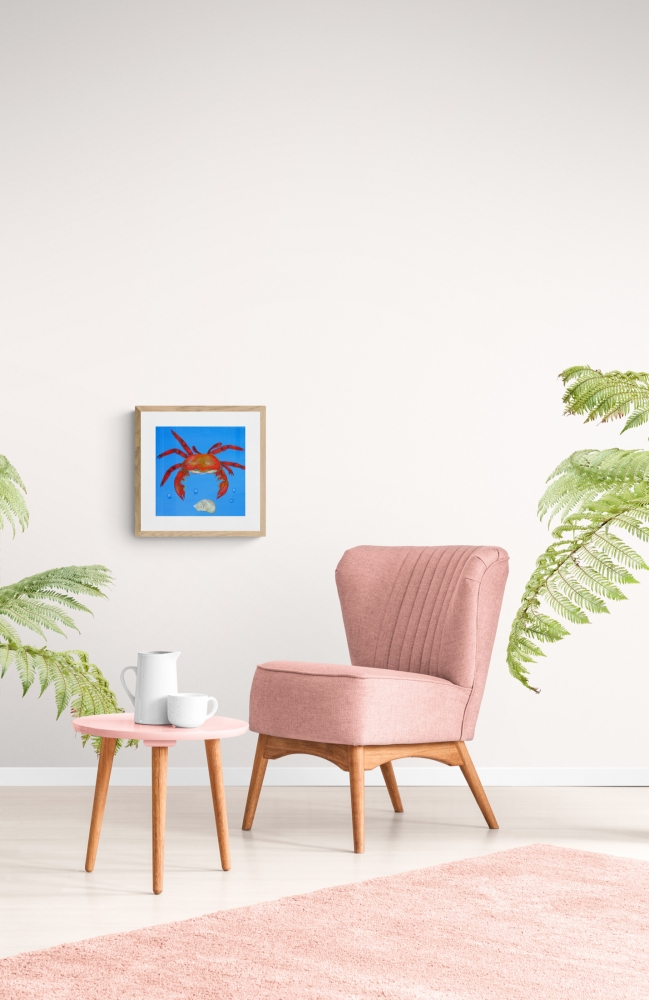Description
This is one of a new series of small paintings called Little Gems. This one is 8" by 8" and is a study of a crab - a beautiful sea creature. I have used iridescent gel on the main body which enhances the colours. The sides are painted so further framing is unnecessary. The appearance of the background colour of this artwork changes in different light.
Crabs attract a mate through chemical (pheromones), visual, acoustic, or vibratory means. When fertilisation has taken place, the eggs are released onto the female's abdomen, below the tail flap, secured with a sticky material. In this location, they are protected during embryonic development and later released into the water.
Once crabs have become juveniles, they will still have to keep moulting many more times to become adults. They are covered with a hard shell, which would otherwise prevent growth. The moult cycle is coordinated by hormones. When preparing for moult, the old shell is softened and partly eroded away, while the rudimentary beginnings of a new shell form under it. At the time of moulting, the crab takes in a lot of water to expand and crack open the old shell at a line of weakness along the back edge of the carapace. The crab almust then extract all of itself – including its legs, mouthparts, eyestalks, and even the lining of the front and back of the digestive tract – from the old shell. This is a difficult process that takes many hours, and if a crab gets stuck, it will die. After freeing itself from the old shell, the crab is extremely soft and hides until its new shell has hardened.
Recent research suggests they can feel some pain!
Material
- Canvas
Dimensions
W. 8” x H. 8” x D. 1.5Style
- Impressionistic
Subject
- Animals and Birds
Framed
NoMore from Jean Tatton Jones
- Weathering the Storm
- Jean Tatton Jones
- Acrylic
- Birds over the Wetlands
- Jean Tatton Jones
- Acrylic
- Sand and Ocean
- Jean Tatton Jones
- Acrylic
